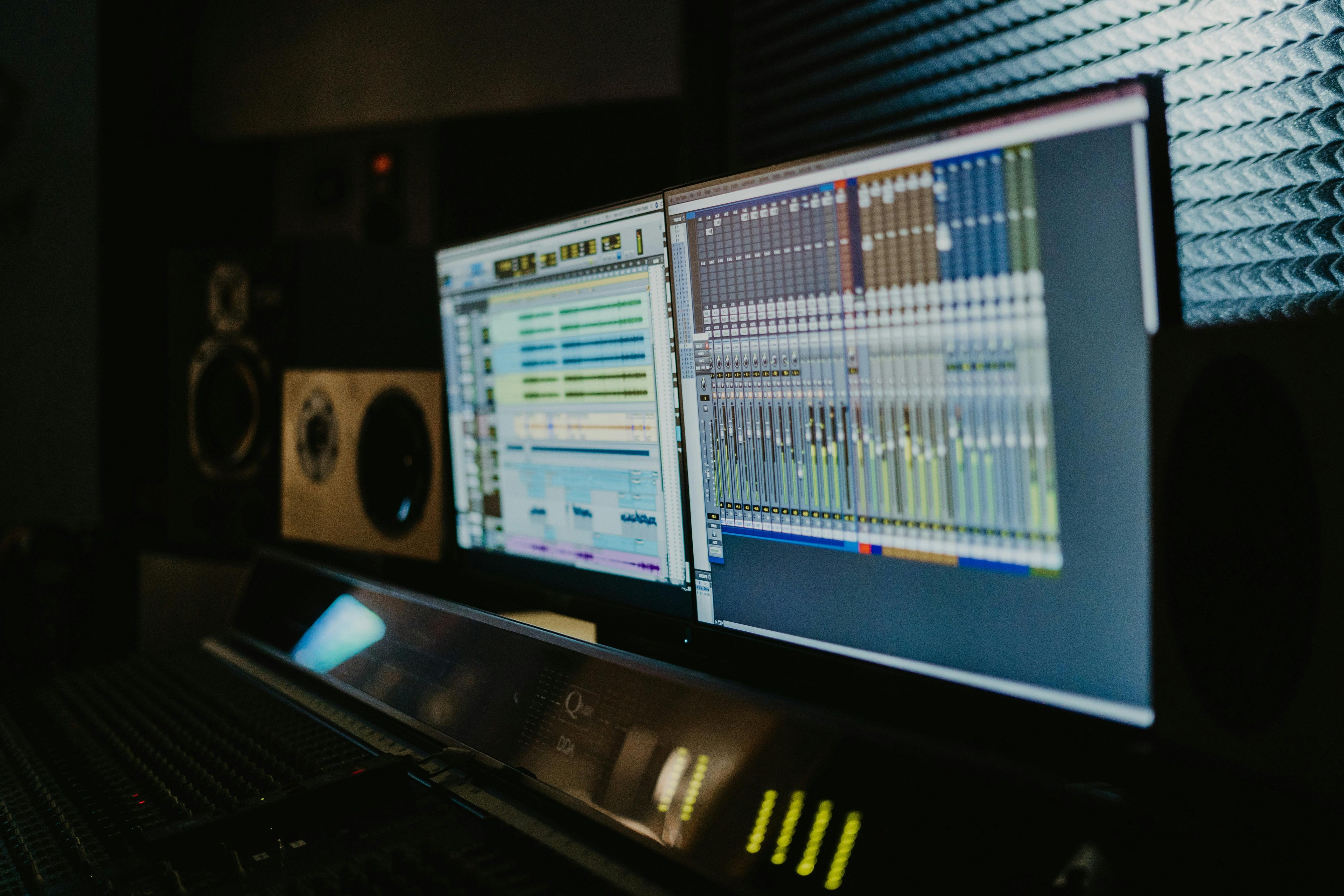Mixing music can feel intimidating when you don’t have access to a professional studio, but the truth is, you can achieve polished and balanced results right from your own home. Many iconic songs have been mixed outside of traditional studios, and with the right mindset, techniques, and tools, you can learn how to mix music at home without studio equipment and still create tracks that sound professional. This guide will walk you through the essentials of home mixing, from preparing your space to finalizing your mix for release, all while keeping costs low.
Understanding the Basics of Mixing
At its core, mixing is about creating balance. Each track in your project, including vocals, drums, guitars, synths, and more, needs to fit together in a way that sounds cohesive and pleasant to the listener. Learning how to mix music at home without studio gear starts with understanding these basics. Adjusting volume levels, using equalization to carve out space for instruments, and applying effects like compression or reverb all help shape the sound. Mixing is not about making every track equally loud, but about giving each part its own place in the overall soundscape.
Choosing Your Mixing Environment
One of the most overlooked factors in mixing music at home is the room itself. Professional studios are designed with acoustics in mind, but your bedroom or living room probably is not. Hard surfaces like bare walls and floors can cause sound reflections that make it difficult to judge your mix accurately. To improve your space without spending much, you can hang curtains, acoustic foam panels, lay down rugs, or use bookshelves and furniture to break up reflections. Even small adjustments can make your environment more reliable, helping you better judge how your music actually sounds. This is one of the most important steps in figuring out how to mix music at home without studio treatment.
Headphones and Monitors
Another key question for home producers is whether to use headphones or studio monitors. Ideally, having both is helpful, but when working with limited gear, high-quality headphones are the most practical choice. Good headphones allow you to hear details clearly and mix without disturbing others. However, headphones alone do not always give the most accurate sense of how your music will sound on speakers. If you do not have monitors, test your mixes on different playback systems such as car stereos, earbuds, or Bluetooth speakers. This process helps you understand how your mixes translate to the real world.
Organizing Your Session Before Mixing
Mixing becomes much easier when your session is organized. Name your tracks clearly, color-code them if possible, and group similar instruments together. For example, drums can be sent to one channel, guitars to another, and vocals to their own group. This makes it easier to apply adjustments consistently. By cleaning up your session first, you can focus on making creative and technical mixing decisions without wasting time hunting for files. Organization is a critical step in how to mix music at home without studio stress.
Balancing Levels for Clarity
The foundation of any mix lies in volume balance. Before reaching for equalization or effects, spend time adjusting fader levels so that no instrument overwhelms the others. Start with the most important element, often the vocals in popular music, and then bring in supporting instruments one by one. If you can achieve a clear mix with just volume adjustments, the rest of the process becomes much easier. This step is often underestimated, but it is one of the most important aspects of learning how to mix music at home without studio tools.
Using Equalization to Carve Out Space
Equalization allows you to shape the frequency content of your tracks. When multiple instruments occupy the same range, the mix can sound muddy. For example, bass guitar and kick drum often compete in the low frequencies, while vocals and guitars can clash in the midrange. By using equalization to cut or boost specific ranges, you can give each element its own sonic space. A small cut in one instrument can make room for another, resulting in a cleaner and more professional sound. This technique is especially helpful when figuring out how to mix music at home without studio-grade monitors, as it helps minimize frequency buildup.
Compression and Dynamics Control
Compression helps smooth out the dynamic range of your tracks, ensuring that no parts are too loud or too soft. For vocals, compression can make the performance feel more consistent and polished, while on drums it can add punch and impact. However, too much compression can flatten the sound and remove its natural dynamics. The key is subtlety. Apply enough to control peaks but not so much that the track loses life. Even without expensive gear, free or budget-friendly compressors in your digital audio workstation can be powerful tools for controlling dynamics.
Adding Depth With Reverb and Delay
Reverb and delay are effects that create a sense of space in your mix. While your home recording might sound dry and flat, adding reverb can simulate the acoustics of a larger room or hall. Delay can add rhythmic echoes that make parts of the track more interesting. The trick is not to overuse these effects. A small amount of reverb on vocals, for example, can add warmth and dimension, but too much can make them sound washed out. These subtle touches are what help transform your music when learning how to mix music at home without studio spaces.
Panning for Width
Panning is the process of placing sounds in the stereo field, from left to right. By carefully panning instruments, you create space and avoid clutter in the center. For example, vocals often stay centered, while guitars, keyboards, or backing vocals can be panned slightly to the sides. Drums can also be spread across the stereo field to create a realistic kit feel. Panning adds width and depth to your mix, making it feel larger and more immersive. Even in a simple home setup, smart use of panning can make your tracks sound professional.
Referencing Other Tracks
One of the best ways to improve your mixing skills is to use reference tracks. Choose professionally mixed songs in a similar genre and compare them to your work. Listen for how the vocals sit in the mix, how loud the drums are, and how the overall balance feels. References provide an objective target for your ears, helping you understand where your mix might need adjustments. This is especially valuable when you are figuring out how to mix music at home without studio-quality speakers, as it keeps your ears grounded in professional standards.
Checking Your Mix on Multiple Devices
Since most listeners will not hear your music on expensive studio monitors, it is important to test your mix on various playback systems. Play your track through headphones, car speakers, phone speakers, and small Bluetooth devices. If your mix sounds balanced across all of them, you are on the right track. If it only sounds good on one system, you may need to adjust. This step ensures your music translates well to real-world listening environments, which is essential when learning how to mix music at home without studio resources.
Taking Breaks to Refresh Your Ears
Mixing for long periods can cause ear fatigue, making it difficult to judge your work accurately. After an hour or two, take a short break to rest your ears. When you return, you will often notice issues you missed before. Stepping away also gives you a fresh perspective, helping you make better decisions. Patience is part of the process, and rushing through a mix rarely leads to the best results.
Using Free and Affordable Plugins
You do not need expensive plugins to achieve great results. Many digital audio workstations come with built-in equalization, compression, reverb, and delay tools that are more than capable of producing professional-sounding mixes. Additionally, there are countless free plugins available online that can expand your toolkit. Learning to master the tools you already have is far more valuable than constantly chasing new gear. When figuring out how to mix music at home without studio equipment, creativity with your resources is the key.
Knowing When to Stop
One of the hardest parts of mixing is knowing when a song is finished. It is easy to keep tweaking endlessly, but at a certain point, additional changes stop improving the track. A good rule of thumb is to compare your mix to your reference track. If your song feels balanced, clear, and emotionally engaging, it is probably ready. Trust your instincts and do not let perfectionism stop you from moving forward.
Preparing Your Mix for Mastering
The final step after mixing is preparing your track for mastering. Leave enough headroom in your mix, usually around six decibels, so there is space for mastering adjustments. Export your track in high-quality formats, such as WAV, rather than compressed files like MP3. Even if you do not master the track yourself, delivering a clean, well-balanced mix will set it up for success in the final stage.
Conclusion
Learning how to mix music at home without studio equipment is completely achievable with patience, practice, and resourcefulness. By focusing on the fundamentals including balancing levels, equalization, compression, effects, and panning, you can create tracks that sound polished and professional. Remember that your space, your ears, and your creativity are just as important as the tools you use. With consistent practice and attention to detail, your home mixes can stand up confidently against tracks made in professional studios. The more you mix, the more your skills will grow, and the easier it will be to bring your musical ideas to life.

